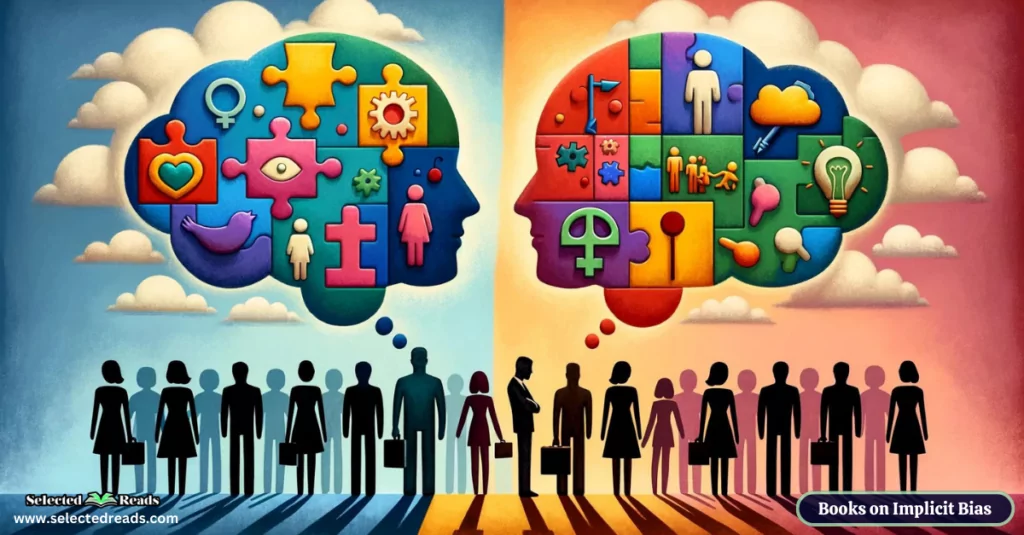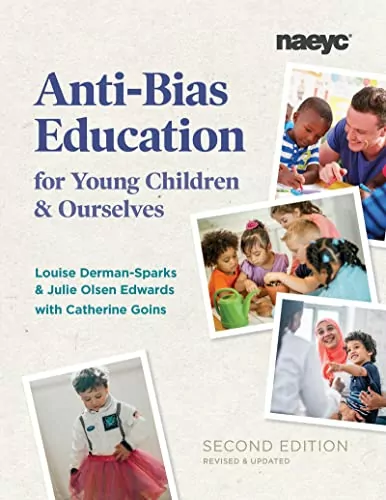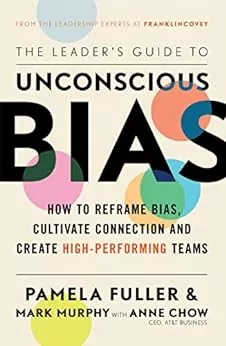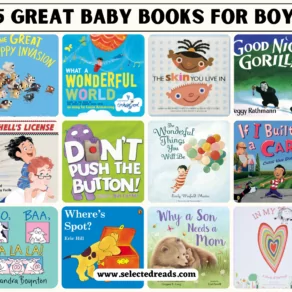Books on implicit and unconscious bias are the topic of our blog post today!
In the realm of education and beyond, the conversations around bias are evolving. Gone are the days when we solely discussed explicit biases—those prejudices we’re aware of and may even openly express. Instead, the focus has now shifted to a far murkier topic: implicit and unconscious biases, the biases that operate in the background, subtly influencing our choices, judgments, and interactions. But don’t mistake their subtlety for insignificance; these biases are often the invisible architects of inequality, the silent barriers that prevent our educational systems and workplaces from being truly inclusive spaces.
As someone who has spent over 15 years in classrooms and now navigates the world of educational research, I’m acutely aware of how these hidden biases can manifest in teaching practices, educational materials, and student interactions. Moreover, how they can trickle down into our decision-making process, perpetuating a cycle that’s as harmful as it is hard to break.
That’s why I’ve rounded up a selection of books that tackle this complex subject head-on. From diving into the nuances of racial biases in the classroom to dissecting the psychological traps that affect even the most seasoned leaders, these reads offer not just eye-opening insights but actionable recommendations. It’s time to go beyond acknowledging bias and to start understanding its intricacies—because it’s only through awareness that we can create meaningful change.
Related: Tips and strategies to talk about race in class
Books on Implicit and Unconscious Bias
Here are our top picks for books on implicit and unconscious bias:
1. Anti-Bias Education for Young Children and Ourselves, by Louise Derman-Sparks and Julie Olsen Edwards
When it comes to understanding bias in education, this book acts like a mentor in your pocket. Louise Derman-Sparks and Julie Olsen Edwards masterfully weave together decades of expertise, offering a roadmap for educators that’s as much about introspection as it is about instruction. They delve into the four pillars of anti-bias education: identity, diversity, justice, and activism.
The authors don’t just ask you to ‘do better’; they arm you with the insights to actually achieve it. Whether you’re grappling with how to discuss racial identity, gender roles, or economic disparities in the classroom, this book takes you from theory to practice with ease. It’s almost like sitting through a series of high-level professional development sessions that challenge and equip you for the transformative work ahead.
2. Anti-Bias Education in the Early Childhood Classroom, by Katie Kissinger
Katie Kissinger manages to take the complex, often murky waters of anti-bias education and turn them into navigable territory. The book seamlessly blends real-world stories, practical strategies, and thoughtful questions that prompt you to take action. It’s the kind of guidebook you’ll find yourself reaching for again and again as you navigate the unpredictable terrain of early childhood education. Remember the days when we’d share classroom stories in the teachers’ lounge? This book gives you that vibe. It’s like having a conversation with a seasoned colleague who knows the ropes but also acknowledges the continual journey of professional growth.
3. Don’t Look Away: Embracing Anti-Bias Classrooms, by Iheoma Iruka, Stephanie Curenton, and Tonia Durden
If there’s one thing I’ve learned in my years as an educator and researcher, it’s that turning a blind eye to bias does more harm than good. “Don’t Look Away” demands just that—your full, undivided attention to the systemic issues that plague our educational system. The book doesn’t just lay down the facts, but it asks you to confront your own perceptions and biases.
The numbers about daily suspensions and unequal opportunities aren’t just statistics; they’re a call to action. For anyone in early childhood education who’s ready to step up and embrace the challenges, this book is a valuable resource. It pushes you out of your comfort zone, urging you to provide equitable learning experiences for all children.
4. We Are the Change We Seek: Advancing Racial Justice in Early Care and Education, by Iheoma U. Iruka et al
What struck me most about this book was its urgency—the authors make it clear that advancing racial justice isn’t just a lofty goal; it’s a necessary and immediate action. Using the CRABAR framework, the book bridges the past and present, connecting the dots between history and our current societal landscape.
The book is full of practical tools and assessments but doesn’t shy away from the difficult conversations either. In my opinion, it’s the combination of action and reflection that sets this book apart. It’s not just asking you to change; it’s showing you how. For instance, the “Educators’ Corner” sections act like those reflective moments we often have in teaching—moments that spur us to look inward before stepping back into the classroom.
5. Think Again: The Power of Knowing What You Don’t Know, by Adam Grant
Adam Grant takes us on a mental odyssey, urging us to unshackle ourselves from outdated perspectives and embrace the power of adaptability. He calls this the “new intelligence,” a form of wisdom that doesn’t just depend on how much you know, but how willing you are to unlearn and relearn. Think back to those ‘aha’ moments in your teaching career, where a sudden realization made you pivot your approach.
This book is packed with such moments, aided by Grant’s engaging storytelling where he draws from interactions with influential figures like Elon Musk and top CEOs. It’s almost like being in a thrilling pedagogical workshop where you’re encouraged to dissect, challenge, and update your viewpoints. Grant presents this as not just a skill but a necessity in our rapidly changing world.
6. Thinking, Fast and Slow, by Daniel Kahneman
Daniel Kahneman’s groundbreaking work almost feels like the psychology class I wish I had taken during my teacher prep years. He introduces us to the dual systems that govern our thought processes: the rapid, instinctual thinking, and the deliberate, rational reasoning. Just think about how these systems play out in your own classroom decisions! Kahneman intricately details how both systems can be clouded by biases and errors, even when we believe we’re being logical.
This book is a treasure trove of insights that can better our decision-making, not just as educators but as individuals. The research-based revelations offer us the tools to be more self-aware and consequently, more effective in our roles.
7. Blindspot: Hidden Biases of Good People, by Mahzarin R. Banaji and Anthony G. Greenwald
Banaji and Greenwald’s “Blindspot” is like holding up a mirror to our subconscious biases. We all think we’re fair and just, right? But what if our brains have hidden agendas formed by lifelong societal conditioning? This book skillfully uses the Implicit Association Test as a lens to expose those biases we never even knew we had. The authors aren’t here to blame but to enlighten, so that our actions align more closely with our intentions.
This is particularly useful in an educational setting where our implicit biases can unknowingly affect our treatment of students. Reading this book is like embarking on a self-reflective journey that’s sometimes uncomfortable but ultimately liberating.
8. The Undoing Project: A Friendship that Changed the World, by Michael Lewis
This book is essentially a love letter to the power of collaborative genius. Through the fascinating friendship of Daniel Kahneman and Amos Tversky, Michael Lewis traces how these two contrasting personalities revolutionized our understanding of human decision-making and biases. It’s like when you co-teach with someone whose teaching style is the polar opposite of yours, yet you both bring something incredibly valuable to the table.
Their work unfolded a new realm of psychology, and Lewis captures this journey with the same veracity and attention to detail that you’d expect from a master storyteller. It’s not just about the transformative power of thought; it’s about the transformative power of friendship and collaboration in shaping thought.
9. This Is Your Brain on Stereotypes, by Tanya Lloyd Kyi
Let’s talk about Tanya Lloyd Kyi’s book. It’s like an extended, but easily digestible, professional development session on the psychology of stereotyping, aimed at younger readers but just as valuable for us educators. It’s fascinating how the book tackles the mechanics of our brain when it comes to labeling and sorting, a practice we unknowingly apply even in classrooms. But what really grabbed me was the book’s intersectional approach—exploring stereotypes not just about race but also about gender, disability, and more.
This book offers practical wisdom, grounding its insights in scientific studies, which can be instrumental in designing curricula or classroom activities aimed at battling stereotypes. What’s even better? It offers actionable steps towards change, making it an empowering read for both students and teachers.
10. The Leader’s Guide to Unconscious Bias, by Pamela Fuller, Mark Murphy, and Anne Chow
Here’s a book that any educational leader or, heck, any educator in general should get their hands on. Fuller, Murphy, and Chow dig deep into the unconscious biases that we may not even realize are influencing our decisions. Remember how we often had to make split-second decisions in the classroom? This book delves into how those decisions can be influenced by biases we might not even be aware of.
For anyone in a leadership or managerial role in education, this is a particularly invaluable guide. It doesn’t just stop at recognizing biases; it offers over thirty tools for addressing them. The prep worksheet could be a game-changer in educational settings for planning meetings, curricula, or even staff evaluations.
11. Biased: Uncovering the Hidden Prejudice That Shapes What We See, Think, and Do, by Jennifer L. Eberhardt
Last but definitely not least, Eberhardt’s “Biased” is not just a book; it’s an urgent call to action. Eberhardt combines scientific inquiry with investigative zeal, making her points deeply resonant and human. For educators, especially those of us who are involved in research, this book offers a robust framework to understand how biases manifest in various societal domains including education. Remember when there was a debate about streaming students into various tracks based on supposed ‘ability’?
Well, this book makes you question such practices and the inherent biases they might carry. It also challenges educators to be proactive in addressing racial and other biases in educational settings. The book is incredibly grounding in its use of real-world examples and offers actionable advice, making it both a compelling and practical read.
12. Diversity Beyond Lip Service, by La’Wana Harris
La’Wana Harris tackles the hard truths about diversity and inclusion in the workplace. She introduces the concept of Inclusion Coaching, a method designed to help everyone from employees to CEOs genuinely “do” inclusion rather than just talk about it. Harris offers a six-stage COMMIT model which ranges from committing to courageous action to telling uncomfortable truths.
The key takeaway here is that diversity efforts often falter because people in power think sharing it will mean losing it. Harris aims to flip that mindset. She provides concrete strategies for recognizing both conscious and unconscious biases and moving toward an inclusive culture where everyone feels a sense of belonging.
13. Race on the Brain: What Implicit Bias Gets Wrong About the Struggle for Racial Justice, by Jonathan Kahn
This book offers a critical perspective on the mainstream narrative surrounding implicit bias, especially its role in discussions of racial justice. Jonathan Kahn argues that the focus on implicit bias runs the risk of simplifying a complex issue. The argument here is that while implicit bias is one tool among many to understand racial inequities, an over-reliance on it can undermine efforts to address structural racism and societal accountability.
Kahn criticizes technological solutions like tests for implicit bias, saying they can erase history and obscure the real issues. He urges us to consider multiple approaches to racial justice, rather than looking for a single, easy answer.
14. Our Racist Heart?: An Exploration of Unconscious Prejudice in Everyday Life, by Geoffrey Beattie
In “Our Racist Heart?”, Geoffrey Beattie explores the subconscious biases that persist even among the most well-meaning individuals. He argues that these hidden prejudices aren’t just confined to any one section of society; they’re widespread, including among educated, liberal thinkers. Beattie utilizes new technologies and experimental approaches to measure and reveal these biases, and how they influence everyday actions. Through personal anecdotes and a broader historical context, the book challenges us to confront our subtle prejudices and their social implications.
15. The Secret Life of Decisions: How Unconscious Bias Subverts Your Judgement, by Meena Thuraisingham
This book dives into the murky waters of decision-making, specifically how unconscious biases skew our choices. Meena Thuraisingham and Wolfgang Lehmacher argue that even experienced leaders can make poor decisions, not due to a lack of critical thinking, but because they fall into mental traps. These traps, often subconscious, include relying on existing beliefs and expectations. The book presents the decision-making process as a skill that can be honed through awareness and guided practice, warning that lack of attention to the subconscious elements can lead to disastrous results for leaders and organizations.
Final thoughts
If you’ve stayed with me through this exploration of books on implicit and unconscious biases, you’re likely feeling a mix of discomfort and enlightenment. That’s a good thing; it’s the first step toward transformation. Understanding these biases, after all, isn’t a mere academic exercise. It’s a foundational step for reshaping how we educate, lead, and even make everyday decisions.
From my years in the classroom and my ongoing research, I can attest that the journey of tackling unconscious bias is arduous but exceedingly rewarding. You not only start to spot those moments where bias used to operate under the radar, but you also gain the tools to proactively create environments that are genuinely equitable—whether that’s a school, a boardroom, or even your own home.
So, what’s the next step? As these books suggest, awareness is just the beginning. We must commit to ongoing learning, to challenging our comfort zones, and most importantly, to taking actionable steps that can interrupt these biases in real-time. Only then can we move from mere awareness to meaningful change, from understanding to uplifting.
In a world that’s increasingly polarized, this is not just beneficial but imperative. So let’s continue this journey together, challenging ourselves to not only uncover these hidden forces but also to dismantle them. Because every step we take towards understanding is a step away from ignorance, and every action we take towards inclusivity brings us closer to a world that values everyone equally.






















